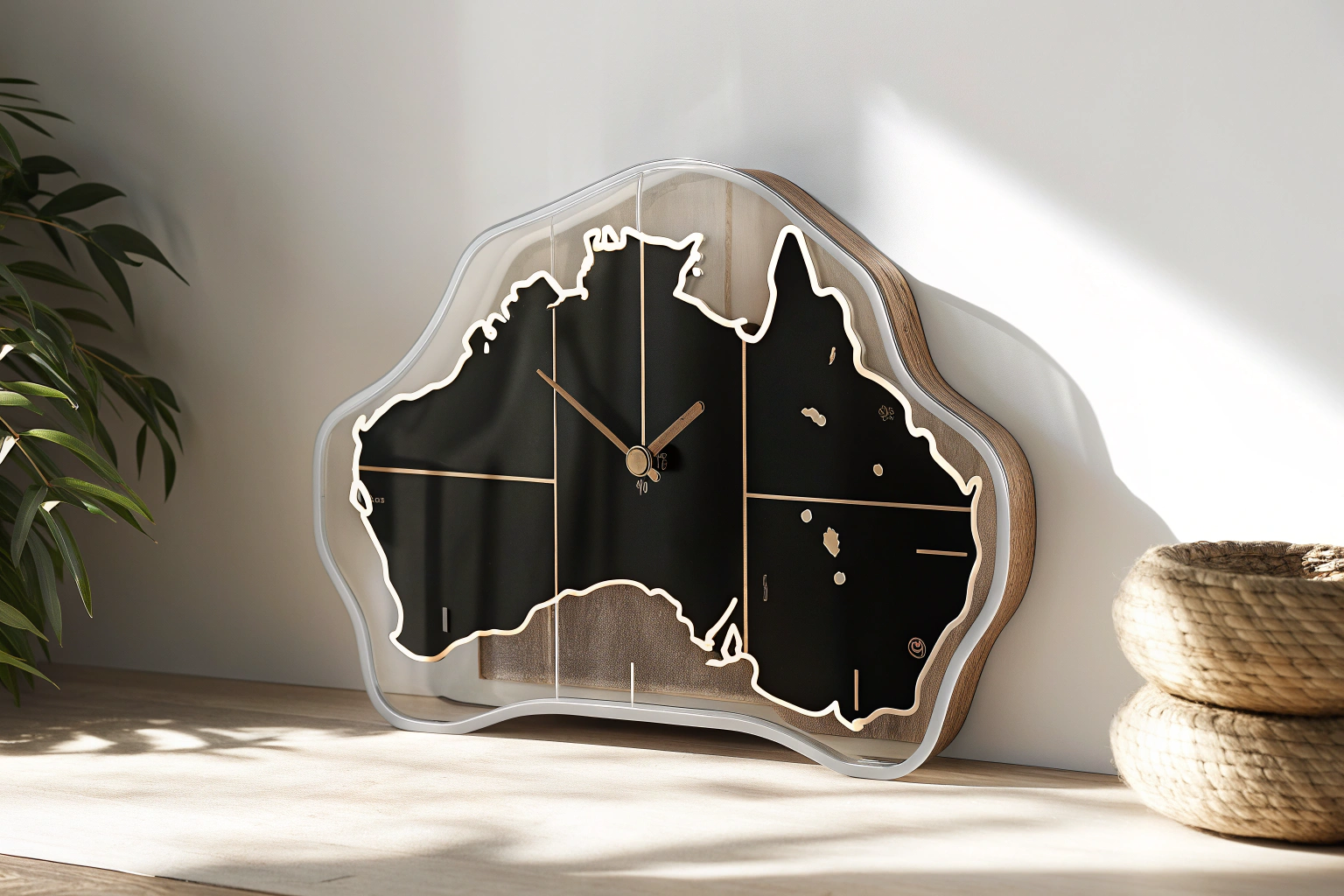
Australia’s capital markets have always been a major contributor to the global economy, made possible by the Australian Securities Exchange (ASX). For traders looking to participate in these capital markets without actually holding the underlying shares, AU share CFDs (Contracts for Difference) offer traders a flexible, efficient, and strategic alternative. Before jumping in to trade AU shares CFDs, it is essential to learn the way they are structured and named, and what hours you can trade them. The aim of this article is to examine the naming conventions and trading hours of AU share CFDs, therefore giving a roadmap on how to effectively enter the segment of the market.
What Are AU Share CFDs?
AU share CFDs give you the opportunity to speculate on the movement of prices of Australian companies listed on the ASX without actually owning the stock. The trader enters into a contract to trade the difference in the value of a stock from their entry point to their exit point – they do not take ownership of the stock.
There is much flexibility in trading these instruments, and both retail and institutional traders have taken these up with popularity as you can trade these long or short, use leverage and trade on margin. So for example if you are looking at share trading blue-chip stocks such as BHP Group, Commonwealth Bank or Afterpay, you can trade these same price movements without the complexities of share trading.
Why Trade AU Share CFDs?
Trading AU share CFDs presents its own set of benefits that also offers attractive options for participants in the market looking to establish short-term trades and longer-term strategies. Here are some of the primary benefits:
- Leverage: Trade larger positions with less amount of capital, giving you increased potential returns (and risks).
- Short-Selling Opportunities: Make money from falling share prices, something difficult to do when investing through traditional methods.
- Access to Corporate Actions: Traders might still receive dividends and be subject to stock splits and mergers.
- Efficient Use of Capital: Margin trading allows capital to be used across multiple positions or asset classes.
- Flexible Trading Hours: Trade at any time when using off-market CFD offerings outside of ASX core hours.
These benefits mean a smart trader can still devise sophisticated strategies around earnings announcements, market news, and macroeconomic conditions, without the friction of having to own the actual stock.
Understanding CFD Nomenclature
While trading indices CFDs is conceptually straightforward, navigating the way they’re labeled and structured across platforms can be a hurdle for the uninitiated. Let’s unpack the key components of CFD naming and contract specifications.
Ticker Symbols And Share Codes
CFD symbols often mirror their underlying stock tickers, but platforms may append unique suffixes or prefixes to differentiate them. For example:
- BHP.ASX (underlying stock)
- BHP.AU.CFD or BHP-AU (CFD version)
This varies depending on the broker or platform you’re using. It’s always wise to double-check the instrument guide or product schedule.
Contract Specifications Explained
Each CFD comes with a predefined contract size (usually equivalent to 1 share or 100 shares) and a tick value (the monetary worth of each price move). Specifications often include:
- Minimum order size
- Overnight financing cost
- Dividends adjustments
- Trading hours per instrument
Being familiar with these can help you fine-tune your strategy and anticipate costs.
Lot Sizes And Minimum Contracts
Platforms commonly support fractional contract sizes, such as 0.1 lots, which equates to trading just 10 shares if 1 lot = 100 shares. This enables better risk management and allows newer traders to start small.
Margin Requirements And Leverage
CFDs require only a percentage of the full trade value — known as the margin. For example, a 20% margin requirement on a $5,000 position means you need just $1,000 to open the trade. This effectively provides 5:1 leverage, which magnifies both potential profits and losses.
Australian Market Hours For Share CFDs

Understanding when to trade can be as important as what you trade. The Australian market follows a strict schedule, and CFD brokers often mirror or slightly extend these hours.
| Trading Phase | AEST Time | Description |
| Pre-Open | 7:00 – 10:00 | Order placement only; no executions |
| Regular Trading | 10:00 – 16:00 | High liquidity and tight spreads |
| Pre-Close Auction | 16:00 – 16:10 | Final price discovery session |
| Post-Close | 16:10 – 18:00 | Quotes available; low execution depth |
| After-Hours CFD Trading | 18:00 – 7:00 | Broker-dependent, wider spreads likely |
ASX Regular Trading Sessions
The market is specifically most active between 10:00 and 16:00 AEST. Inside this time traders are likely to experience the maximum level of market conditions: tight spreads, complete market depth, and execution speed.
Pre-Open And Post-Close Trading
Pre-market trading (7:00 – 10:00 AEST) allows you to enter orders, but is unable to trade. Post-close and off-market trading often comes with limited liquidity and wider bid/ask spreads which requires a more cautious risk strategy.
Public Holidays And Early-Close Days
Australia closes the national market for public holidays, and sometimes will operate a half-day before the national public holiday (check with ASX to check holiday calendar or broker announcements to stay out of a messy rollover or illiquid conditions).
How To Trade AU Share CFDs: Step-By-Step Guide
Getting started with AU share CFDs doesn’t require advanced technical knowledge — but a step-by-step approach helps you avoid common pitfalls.
Open And Fund Your Trading Account
Choose a reputable broker regulated by ASIC, complete KYC verification, and fund your account using a method that suits your trading style (bank transfer, card, e-wallet).
Select Your AU Share CFD Instrument
Use the platform’s search function or instrument list to identify shares that align with your strategy — whether you’re targeting high volatility, strong dividend yield, or recent news catalysts.
Place Your First CFD Trade
Decide whether to go long or short, input your lot size, and set any desired stop-loss or take-profit levels. Always double-check margin impact before confirming.
Monitor And Manage Your Position
Use technical indicators, price alerts, and trailing stops to manage open trades. Adjust your risk-reward profile as the trade evolves.
Close Your Position And Review Performance
Exit when your target is met or conditions change. Review each trade post-exit — did you follow your plan? What could be improved next time?
Trade AU Share CFDs Across All Platforms
The ability to trade seamlessly across devices and platforms is essential in today’s fast-moving markets.
- MetaTrader 4 (MT4): Popular for its simplicity, speed, and expert advisor (EA) automation.
- MetaTrader 5 (MT5): Offers deeper order types, more indicators, and economic calendars built-in.
- TradingView: Great for charting and social insights. Ideal for visual traders and scripting custom alerts.
- Mobile Trading App: Allows you to react to breaking news or price movements instantly. Most apps now support full functionality, including deposits, withdrawals, and multi-asset charts.
Choose A Trading Account Based On Your Experience Level
Different traders need different tools. Most brokers offer account types such as:
- Standard Account – No commission, slightly wider spreads, great for casual traders.
- ECN Account – Raw spreads with a commission. Preferred by scalpers and high-volume traders.
- Demo Account – Practice risk-free before going live. Essential for beginners.
Choose the one that matches your trading goals and risk tolerance.
Frequently Asked Questions
What Is The ASX And How Does It Affect CFD Trading?
The ASX is Australia’s primary stock exchange. CFD pricing closely mirrors ASX prices, so understanding ASX rules and trends can give you an edge.
How Do I Read AU Share CFD Symbols?
They often resemble ASX tickers but include prefixes/suffixes (e.g., “BHP.AU.CFD”). These tags indicate the instrument is a derivative, not the physical share.
Can I Trade AU Shares Outside ASX Hours?
Yes, many brokers offer after-hours CFDs, though spreads may widen and execution might be limited.
What Are The Margin Requirements For AU Share CFDs?
They range from 20–50% based on volatility, stock size, and broker policies.
Are There Additional Costs For After-Hours Trading?
Possibly. Spreads widen, and swap rates may apply. Always read your broker’s trading conditions.
How Do Public Holidays Impact Market Hours?
AU share CFD trading usually pauses or operates on reduced hours during ASX holidays. Positions may also be exposed to rollover risk.
What Risk Management Tools Should I Use For AU Share CFDs?
Stop-loss orders, trailing stops, hedging techniques, and proper position sizing are essential. Always calculate worst-case scenarios.
Conclusion
To conclude, trading share CFDs on the AU exchange provides an exciting entry-point to Australia’s equity markets where traders can obtain flexibility, leverage, and strategic control. It is possible for traders to fully understand how to trade with more confidence, whether on MetaTrader, TradingView, or on a mobile device, by becoming aware of the specific terminology, the precise hours of operation, how to execute both orders and margin, and of course, staying prepared for trading is half the battle – besides timing.
